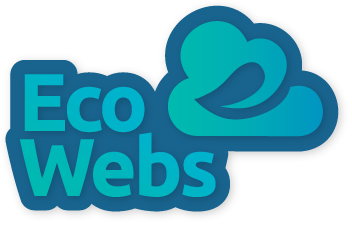In an increasingly digital world, web accessibility has become a crucial issue. The accessibility of a website refers to its ability to be used by as many people as possible, regardless of their motor or cognitive abilities. In this article, we will explore the importance of web accessibility, how to implement it following W3C standards, and its advantages and disadvantages, both for users and for search engine positioning.
What is Web Accessibility?
La accesibilidad web es el diseño y desarrollo de sitios web para que puedan utilizarlos personas con diversas discapacidades. Esto incluye a personas con discapacidades visuales, auditivas, motoras, cognitivas, del habla y de otro tipo. Un sitio web accesible permite a todo el mundo, independientemente de sus capacidades, acceder a la información y realizar las mismas tareas sin barreras.
Why is Web Accessibility Important?
Web accessibility is critical for several reasons:
- Human Rights: All people should have equal access to the information and opportunities offered by the Internet.
- Broader Reach: Making your website accessible can broaden your audience, including people with disabilities.
- Legal Compliance: In many countries, web accessibility is a legal requirement. Failure to comply with these requirements can lead to penalties and lawsuits.
Accessibility Standards: WCAG and W3C
The World Wide Web Consortium (W3C) is the leading organization that develops international standards for the Web. One of its most important initiatives is the Web Accessibility Initiative (WAI), which has developed the Web Content Accessibility Guidelines (WCAG).
WCAG Principles
WCAG is based on four fundamental principles, known by their acronym in English as P.O.U.R.:
- Perceptible: Information and user interface components should be presented in a way that can be perceived by everyone.
- Operable: The user interface components and navigation should be operable by anyone.
- Understandable: The information and operation of the user interface must be understandable.
- Robust: Content must be robust enough to be reliably interpreted by a wide variety of user agents, including assistive technologies.
Compliance Levels
The WCAG defines three levels of conformance:
- Level A (minimum): Provides the most basic level of accessibility.
- Level AA (medium): Addresses the most common accessibility barriers and has the greatest impact on user experience.
- Level AAA (high): The highest level of accessibility, but it is not always feasible for all websites to achieve this level.
How to Implement Accessibility on your Website
Implementing web accessibility doesn’t have to be complicated. Here are some practical recommendations you can follow:
1. Use of Image Alt Tags (Alt Text)
Every image on your website should have an alt tag that describes its content. This helps visually impaired people who use screen readers understand what the image represents.
2. Adequate Color Contrast
Make sure there is enough contrast between the text and the background so that people with low vision can read the content without difficulty.
3. Accessible Navigation
Navigation should be clear and consistent. Use drop-down menus and breadcrumbs to help users easily find what they are looking for.
4. Keyboard compatibility
Make sure all of your site’s functionality is accessible via a keyboard, without the need for a mouse. This is vital for people with motor disabilities.
5. Clear and Simple Text
Use clear and simple language. Avoid technical jargon and write in short, direct sentences.
6. Captions and Transcripts for Multimedia Content
Provide captions for videos and transcripts for audio content. This is essential for people with hearing impairments.
7. Accessible Forms
Forms should be accessible, with labels clearly associated with each field and clear instructions.
8. Avoid Flashing Content
Flashing or blinking content can be problematic for people with photosensitive epilepsy. It is best to avoid this type of content.
9. Assistive Technologies
Make sure your site is compatible with assistive technologies such as screen readers and alternative input devices.
Advantages and Disadvantages of Web Accessibility
Advantages
- Greater Reach and Audience:
- Accessible websites can be used by more people, including those with disabilities, which increases the potential reach of your content and services.
- Improved SEO:
- Search engines value accessibility. An accessible site tends to have better content structure and tag usage, which improves search engine rankings.
- Legal Compliance:
- Complying with accessibility regulations can avoid legal issues and strengthen your brand’s reputation.
- Improved User Experience:
- Accessibility principles often improve overall site usability, benefiting all users, not just those with disabilities.
- Social Responsibility:
- Being inclusive shows that your company or brand cares about all of its users, which can improve customer image and loyalty.
Disadvantages
- Additional Costs:
- Implementing accessibility can require more time and resources, especially if an existing website has to be modified.
- Technical Complexity:
- For those unfamiliar with accessibility guidelines, there can be a significant learning curve.
- Ongoing Maintenance:
- Ensuring that a website remains accessible requires ongoing monitoring and updating.
Accessibility and Search Engine Optimization (SEO)
Positive Impact
- Improved Content Structure:
- Accessibility practices, such as proper use of headings and alt tags, help search engines better understand the content on your site.
- Improved Dwell Time:
- An accessible site provides a better user experience, which can lead to visitors staying longer and exploring more pages.
- Lower Bounce Rate:
- Users can easily find and access the information they need, reducing the likelihood that they will quickly leave the site.
- Optimized Loading Speed:
- Accessibility often involves optimization of multimedia elements and clean code, which improves site loading speed, an important factor for SEO.
Negative Impact
- Improper Implementation:
- If accessibility guidelines are not followed correctly, problems can be created that negatively impact usability and, therefore, SEO.
- Over-optimization:
- Trying to force too many accessibility and SEO practices can result in an overloaded and confusing site for both users and search engines.
Conclusion
Web accessibility is essential to creating an inclusive and equitable internet. While it can present challenges and require investment, the benefits to users, legality, and search engine rankings are significant. By following W3C standards and WCAG guidelines, we can ensure that our content is accessible to everyone, improving user experience and expanding our reach.
Implementing web accessibility is not only a social and legal responsibility, but also a smart strategy to improve SEO and user satisfaction. The key is to create a website that everyone can use, enjoy, and benefit from, regardless of their abilities. Together, we can build a more inclusive and accessible digital future for all.


